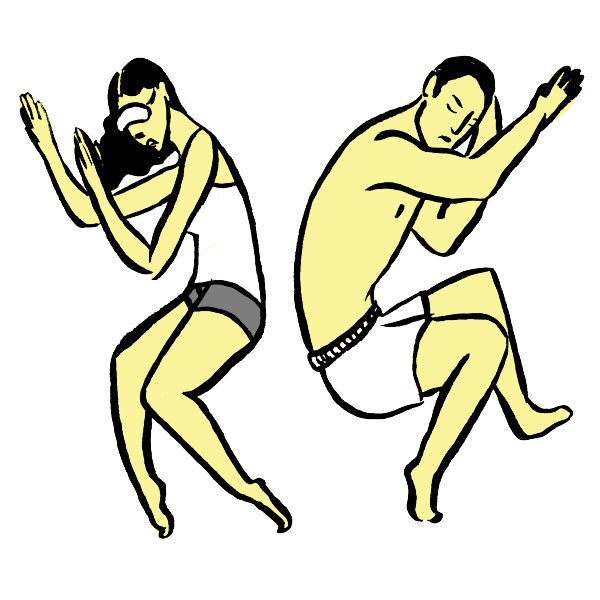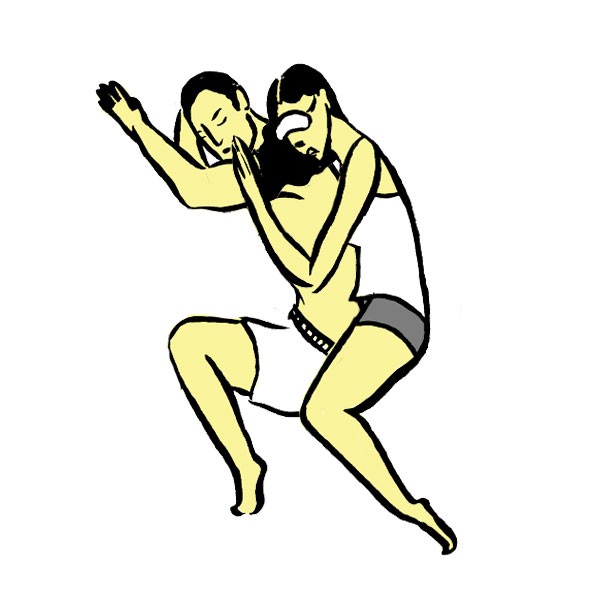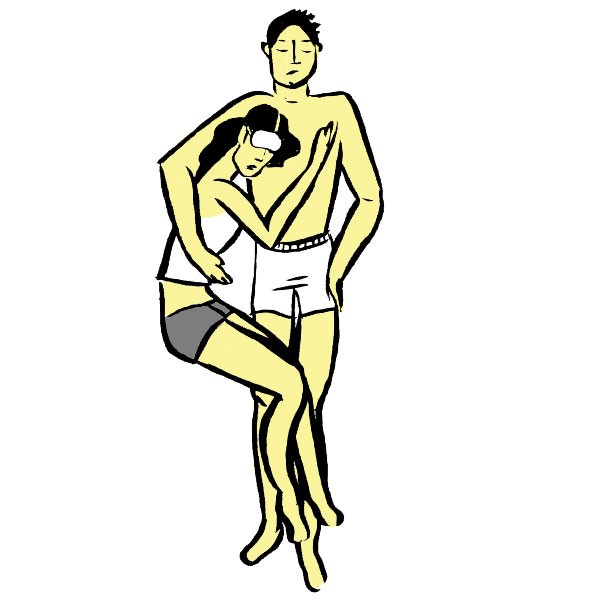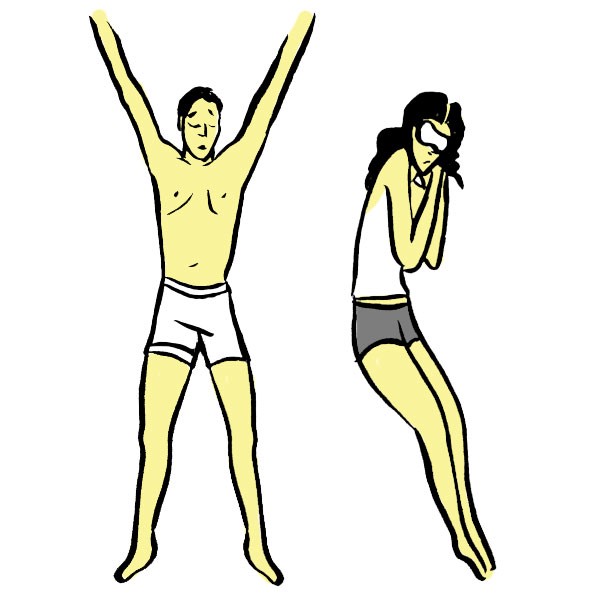Sleeping Together is a four-part series that examines the science behind that other thing couples do together in bed: sleep. We will publish a new installment every morning, starting Monday and ending today.
Does a sleeping body lie? In 2012, the hotel chain Travelodge surveyed 2,000 British couples. The study revealed the most common sleeping positions for couples and what they might have to say about the state of a relationship — thanks to a little help from psychologist Corinne Sweet. Below are the top eight such positions and a little breakdown of what they mean for your relationship (per Sweet) and your sleep (per science).

Liberty: Back-to-back, not touching (28 percent)
What it says about your relationship: You’re connected yet independent.
What it means for your sleep: According to doctors, side-lying is one of the healthiest sleep positions and supports your spine and neck properly; this position gives you both a little bit of space, too, which is good long-term since 41 percent of Americans report problems with tossing and turning at least a few nights per week.

Cherish: Back-to-back, touching (18 percent)
What it says about your relationship: Comfortable, intimate and relaxed with one another
What it means for your sleep: The person lying on their right gets the benefits of less pressure on their stomach and lungs, while the person lying on their left gets increased circulation to the heart. The physical contact also means you’re probably a bit happier with your relationship than those who aren’t touching.

Spoon: Side-by-side sleeping, curled up with each other in the fetal position (13 percent male on outside; 5 percent female on outside)
What it says about your relationship: Strong sexuality and feeling of security
What it means for your sleep: Great for your psyche, not so great for your back. It bends both of your spines into an unnatural C shape rather than the healthy S-shape.

Pillow Talk: Face-to-face (7 percent)
What it says about your relationship: An intimate need for one-on-one contact and conversation
What it means for your sleep: If your arm ends up under your head, you could be pressing on the nerves that run from your shoulder down your arm, which can cause numbness as well as constrict the muscles of your shoulder and neck on that side.

Lovers Knot: Face-to-face, legs intertwined at first, then separate for the rest of the night (8 percent)
What it says about your relationship: Loving independence — a sign of intimacy, love and sexuality
What it means for your sleep: Good mix of contact and space. If you both end up on your backs, you’re in luck, because most doctors agree that sleeping on your back puts your spine in the best neutral position, made even better if you use a thin pillow or none at all. Bonus: It can also mean fewer facial wrinkles.

The Lovers: Face-to-face with legs intertwined all night (4 percent)
What it says about your relationship: Cannot bear to be separated
What it means for your sleep: Has the most potential for disrupted sleep, no matter how cozy you feel.

The Romantic: Woman lying with head and arm on man’s chest (1 percent)
What it says about your relationship: Intimate pose favored in a new relationship or after sex; also represents new or rekindled love
What it means for your sleep: For the person on top, sleeping on your stomach is one of the worst positions for sleep because it forces your neck to rotate into a tight position that can lead to aches and pains. If the person being laid on is prone to snoring, laying on their back can make it worse — and the other person will basically have a front row seat to it.

Superman/woman: One person lying in starfish position with the other hanging off the bed (1 percent)
What it says about your relationship: One person is dominant, the other is obliging
What it means for your sleep: Generally a good thing since you’re on your back, but having your arms up can put pressure on shoulder nerves. It’s also bad news for snorers. Plus, how long can one partner really be okay with the other hogging the bed every night?
Jennifer Sanchez is a freelance writer in Portland.
More from our four-part series on sleeping with your partner:
- People Can Change, Sleep Cycles Can’t
- Women Are From One Side of the Bed, Men Are From the Other
- No Sleep? No Sex—And a Lot More Fighting
